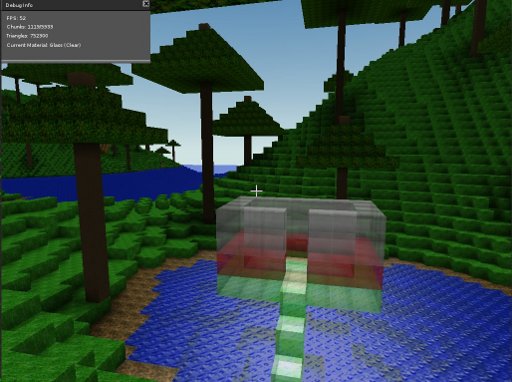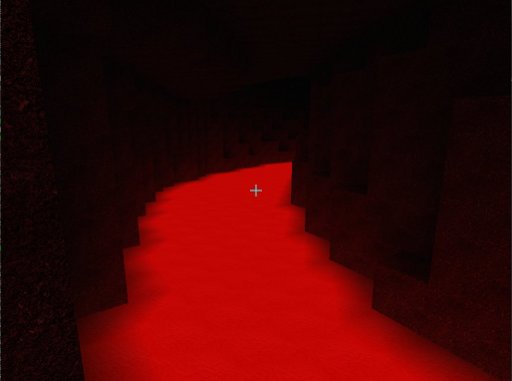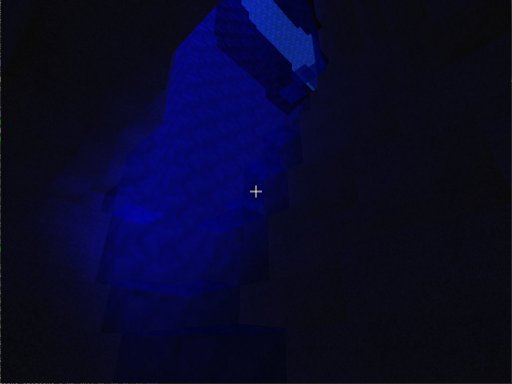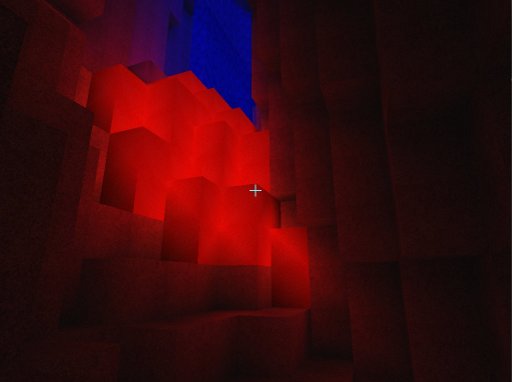I’d like to introduce Digbuild, an open-source game engine inspired by the excellent game Minecraft (and Infiniminer before it — that’s right, Minecraft is itself a clone). I’ve been working on it on and off in my spare time for a few months now, and today I decided that it’s ready to show to the world. For the last couple of months I was debating when it would be time to publish it. I didn’t want to release it in such an early stage that it was unusable, and in particular I didn’t want to release it in a state where it was nearly impossible to build. This weekend, though, my good friend Blake Miller took it upon himself to build Digbuild (say that 5 times fast), and as it turns out, the build system is relatively workable. So, have at it!
What Digbuild Is
Right now Digbuild provides a randomized, voxel-based world for the player to explore. In this regard, it’s very similar to Minecraft. You can create and destroy blocks, and thus you can build castles and any other structures that spring to mind. Digbuild has several improvements over Minecraft:
- Infinite world height. You can build structures as tall as you like.
- Colored lighting. Different blocks emit different colors of light, and colored glass blocks filter the light that flows through them.
- Translucent materials. Want to build a castle out of six different colors of stained glass? Go for it.
- Bump- and specular-mapped textures: Glass is shiny and rocks are rough.
- Open source. Want to improve something that’s not changeable through an existing API? Hack the source to your heart’s content.
What Digbuild Isn’t
Although Digbuild is heavily inspired by Minecraft, it does not strive to be just like it. If you want to play Minecraft, go play Minecraft! The ultimate goal is for Digbuild to go in several directions. We’re planning a Python-based scripting engine to make building plugins easy, and it can always be forked. There’s a lot of things that Digbuild lacks at the moment:
- It’s unfinished. If you want to play a game, don’t choose Digbuild. It’s still early in development, and right now is targeted towards hackers.
- There’s no multiplayer support. It’s planned, but is still a ways off.
- There’s no crafting. The crafting system will eventually be fully Python-based, but there’s no support for this yet.
How to Contribute
We’d be thrilled if you wanted to help make Digbuild better. It’s got a long way to go before it’s really a video game, but building it is (at least) half the fun, right? If you’re interested in working on it, just fork it on Github and go crazy. Add something cool? Issue a pull request and see it get merged into the main game.
There’s plenty of work to do aside from coding, as well. We need to create textures for new materials, come up with ideas for gameplay, and eventually add sound effects.
Finally, we’re under no pretense that Digbuild is perfect. It’s still a work in progress, and any kind of feedback at this stage could be helpful. So don’t hold back your criticisms or ideas!
Learning More
I plan to write a series of articles on what I consider a few of the more interesting bits of the Digbuild implementation. Right now the topics I expect to write about include the random terrain generation, graphics optimizations, and efficient collision detection algorithms. If there’s anything else interesting about how Digbuild works, let me know and I’ll consider writing about that too!




Comments are disabled for this post